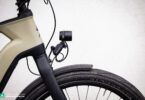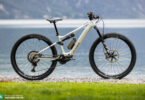A full suspension eMTB for € 2,800 – is that even possible and what do you get for your money? The Decathlon Stilus 29″ features a Bosch Performance Line motor and a 500 Wh battery, and it’s almost half the price of the most affordable bike in our budget eMTB group test. Can the Stilus 29″ perform on the trail nonetheless?
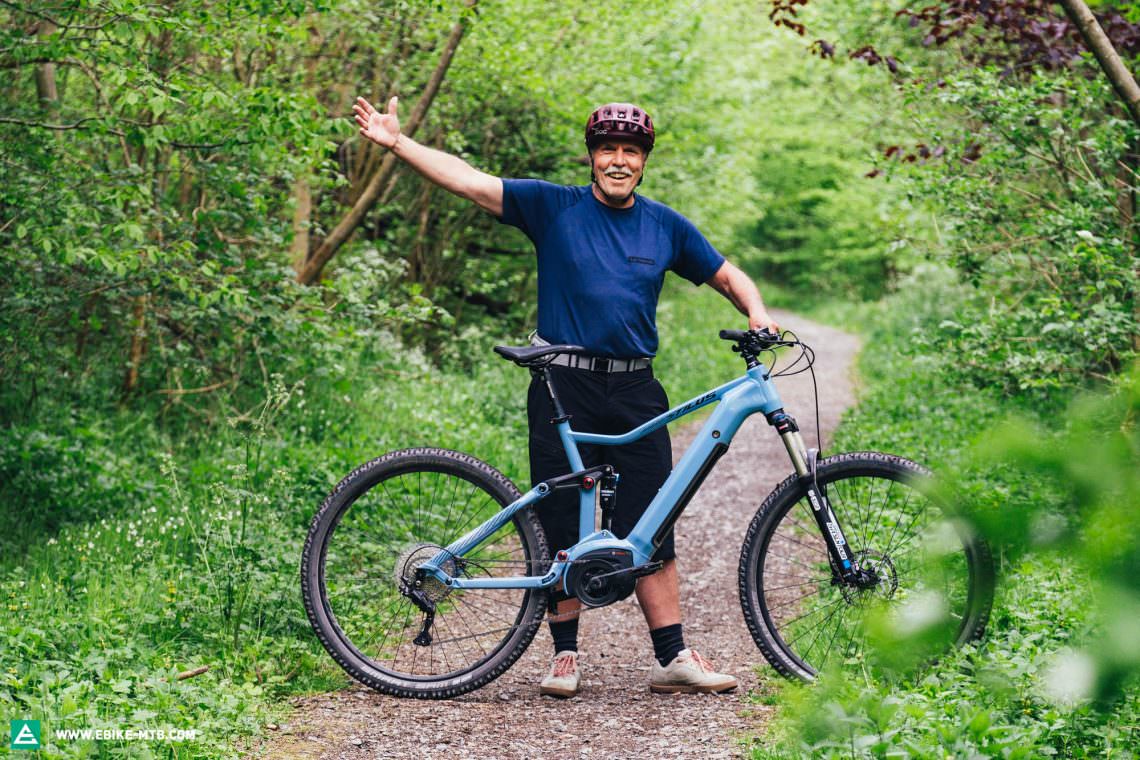
More power, more battery capacity, faster, further, better, and more bling! No doubt about it, the bike industry is good at outdoing itself with superlatives and high-performance products. But is it necessary? Honestly, many modern eMTBs are over-engineered when you look at how they get used. A 750 Wh battery, 85 Nm, 200 mm travel – only to ride a 10-kilometre loop, stop at the pub and take the bus home ;). It’s the same with Ferraris and other supercars, which people drive to go shopping or stop at the ice cream parlour instead of the racetrack.

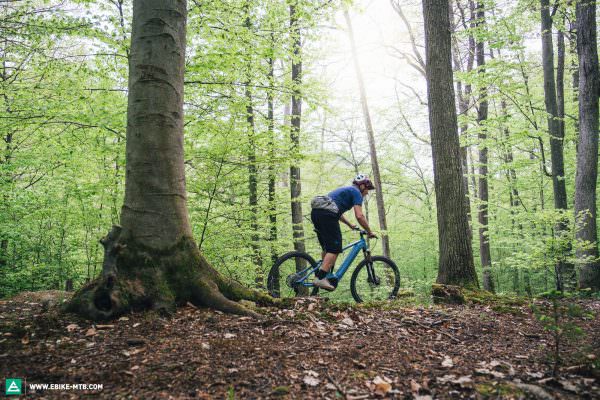
Decathlon enter the eMTB market
Decathlon are one of the world’s largest sporting goods manufacturers with a turnover twice as big as Trek, Specialized and GIANT combined. Above all, the sports giants are known for their affordable in-house brands, huge department stores and unbureaucratic customer service. The portfolio also includes several full suspension eMTBs at prices you won’t find anywhere else. Certainly not in our current eMTB group test of 11 bikes priced up to € 6,500. It shows clearly that bikes under € 5,000 start making big compromises in terms of riding performance. Several manufacturers don’t even offer eMTBs below € 4,000. When we discovered the Decathlon Stilus for € 2,800, we knew we had to put it to the test! Would we be in for a big surprise? Is it even possible at this price point, are Decathlon capable of witchcraft? The important thing is that you adjust your expectations to the price when looking at the spec sheet. However, we can say that the components are sufficient for those who are looking for a cheap but good entry into the sport when looking at the specs on paper.
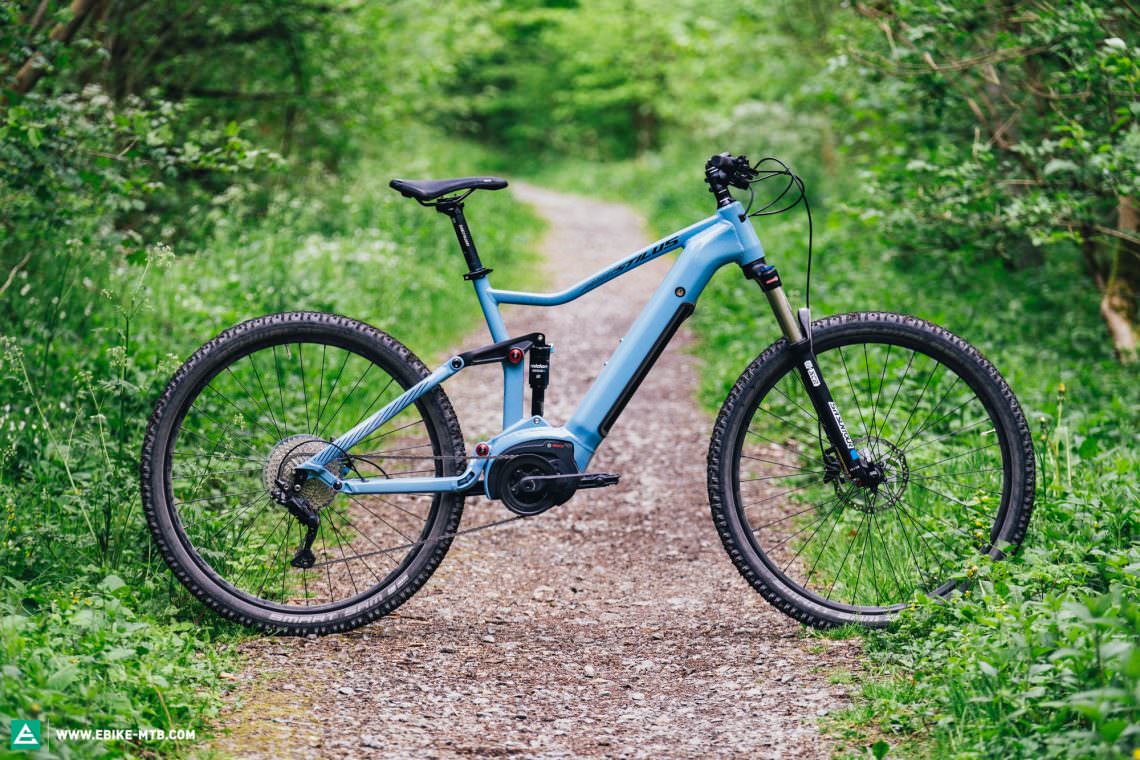
Decathlon Stilus 29
€ 2,799
Specifications
Motor Bosch Performance Line 65 Nm
Battery Bosch PowerTube 500 Wh
Display Bosch Purion
Fork SR Suntour XCR 34 130 mm
Rear Shock SR Suntour Raidon 130 mm
Seatpost Alu mm
Brakes Shimano MT4000 180/180 mm
Drivetrain Shimano DEORE 1x10
Stem Signum 55 mm
Handlebar Signum 720 mm
Wheelset Decathlon 29"
Tires Schwalbe Smart Sam Performance 2.25
Technical Data
Size M - XL
Weight 24.7 kg
Perm. total weight 120 kg
Max. payload (rider/equipment) 95 kg
Trailer approval no
Kickstand mount no
The Decathlon Stilus 29″ in detail
65 Nm of torque and 500 Wh battery – at first glance, these specs could also apply to a Light eMTBs such as the Orbea Rise H with an aluminium frame, but only at first glance. The similarities stop on the scales at the latest, tipping them at 24.7 kg. Ultimately, however, this isn’t necessarily a bad thing because the Stilus 29″ appeals to a completely different target group. The assistance is provided by tried and trusted Bosch technology. Many bikes from other brands also rely on Bosch’s powerful motors. For the Stilus 29″, Decathlon use a Bosch Performance Line motor, which puts out 20 Nm less torque compared to the higher end models, such as the Bosch Smart System, and offers less connectivity and digital features like integrated navigation. Decathlon opted against the use of a skid plate to protect the motor. The motor is powered by a 500 Wh battery, which should last long enough for all-day rides without needing to recharge, considering the motor’s efficiency. In addition, the battery can be removed from the down tube and locked into place as a theft protection measure. To keep out any moisture and dirt, you get a sturdy and well-sealed battery cover, showing some more expensive brands how it should be done. The same applies to the charging port: it’s easily accessible and offers a better solution than the original one from Bosch!
Hands up! Some significantly more expensive eMTBs can learn a thing or two from the details of the Decathlon Stilus 29″
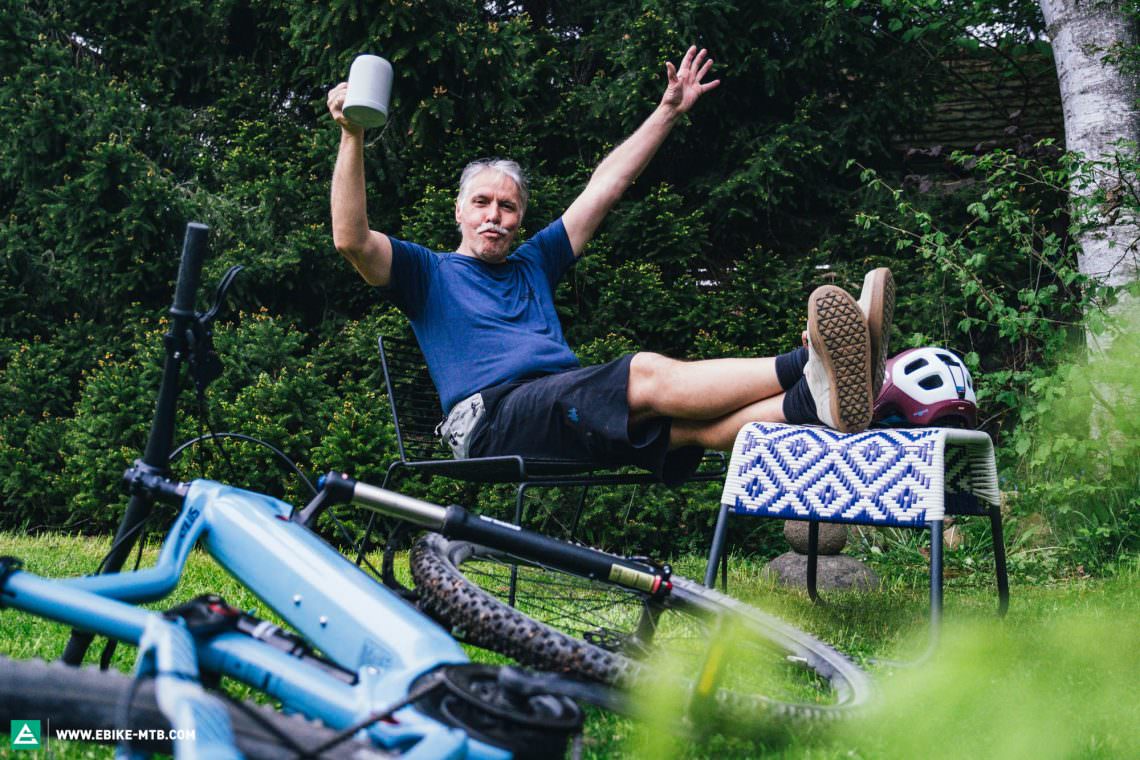
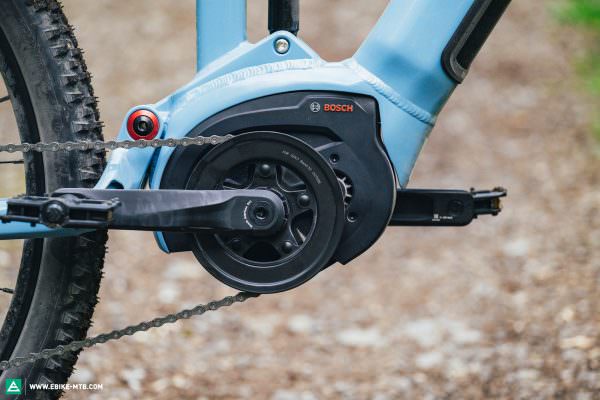
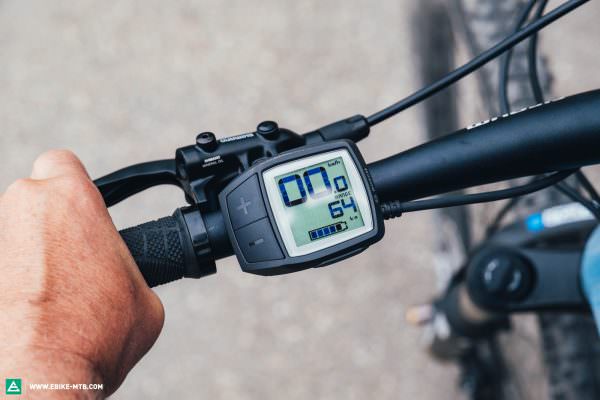
The Bosch system gets controlled via the Purion display on the handlebar. As the name suggests, the functionality of the now outdated onboard computer is limited. It lets you select from 5 different support modes, including the dynamic eMTB mode. Even in Turbo mode, the motor isn’t a brute, making it easy for beginners to get to grips with due to the lower torque output. The motor and battery are encased in a very simple yet functional no-frills aluminium frame. The quality of workmanship is impressive: although the weld seams are visible and not as refined and smoothed out as on many significantly more expensive bikes, the frame makes a solid impression. For the colour, Decathlon opted to go with a simple blue shade called “Gulf Blue”, with colour accents on the bearing covers and the battery keyhole. The Stilus 29″ isn’t the most stylish looking eMTB to show off with when making a stop at the ice cream parlour, but therefore you can afford an extra serving with all the toppings.
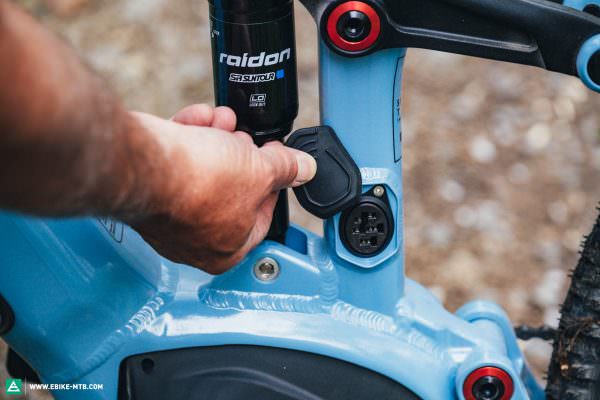

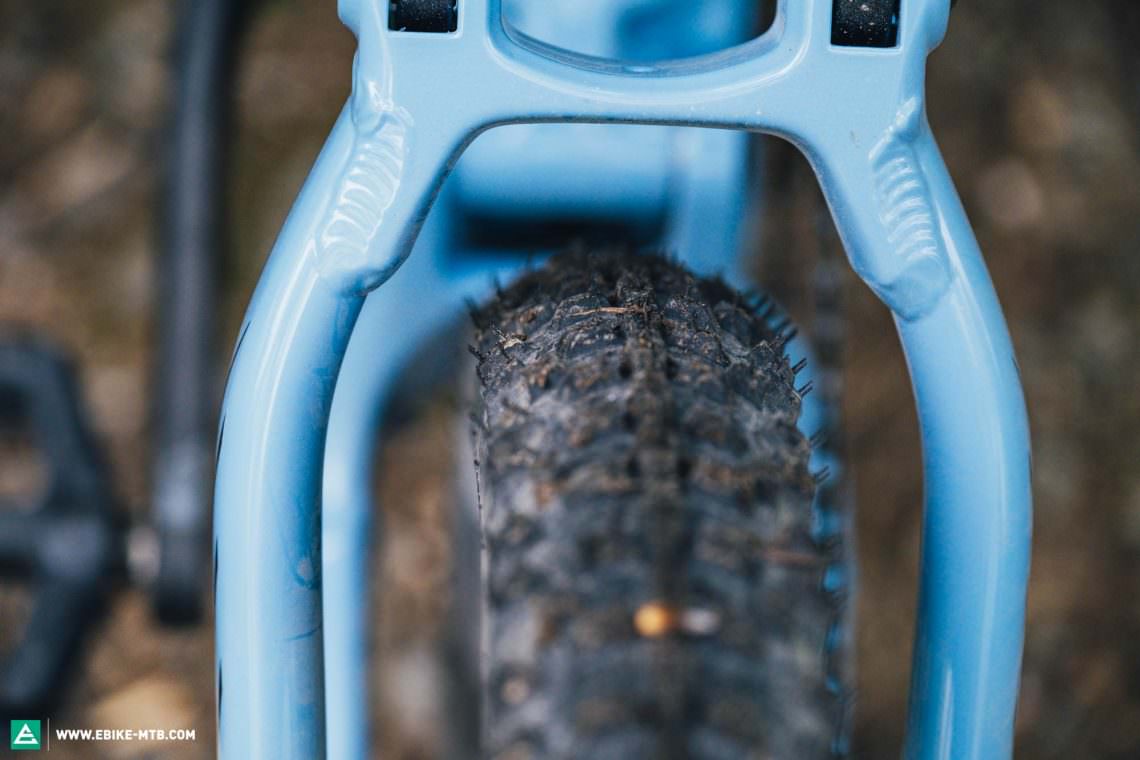
The components of the Decathlon Stilus 29″
The components aren’t aimed at aggressive eMTBers. It’s less about performance and due to the low price, it will never be as feature-rich either. Nevertheless, most of the components come from well-known brands. The 130 mm travel suspension is supplied by SR Suntour, though it doesn’t offer much in the way of adjustability. The XCR 34 fork relies on a coil instead of an air spring and the Raidon air shock has no rebound adjustment, which is the biggest drawback, as it turned out later. There’s a 10-speed Shimano DEORE drivetrain taking care of the gears, which reaches its limits on steep climbs due to the small 11–42 t cassette and 381% gear range – conventional eMTBs with 12-speed drivetrains have gear ranges of up to 520%. Shimano’s two-piston BR-MT410 brakes let you keep your speed in check, which come with two-finger levers instead of the one-finger models you’ll find on most modern MTBs. Multi-finger brake levers aren’t ideal since they teach you to brake with several fingers, making you open your hand more and thereby reducing your control of the handlebar. The 180 mm rotors are undersized for heavy riders, especially on long descents. While developing the frame, Decathlon had the foresight to give it enough clearance for the option of wide and aggressive tires. That’s a good thing because the 2.25″ Schwalbe Smart Sam Performance ADDIX look more like road tires, offering minimal grip and confidence due to the hard rubber compound and shallow tread.

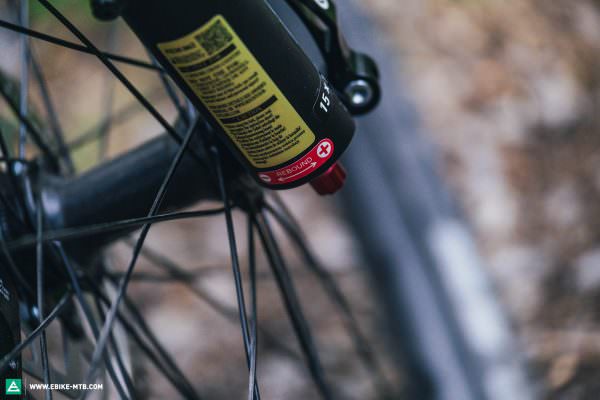
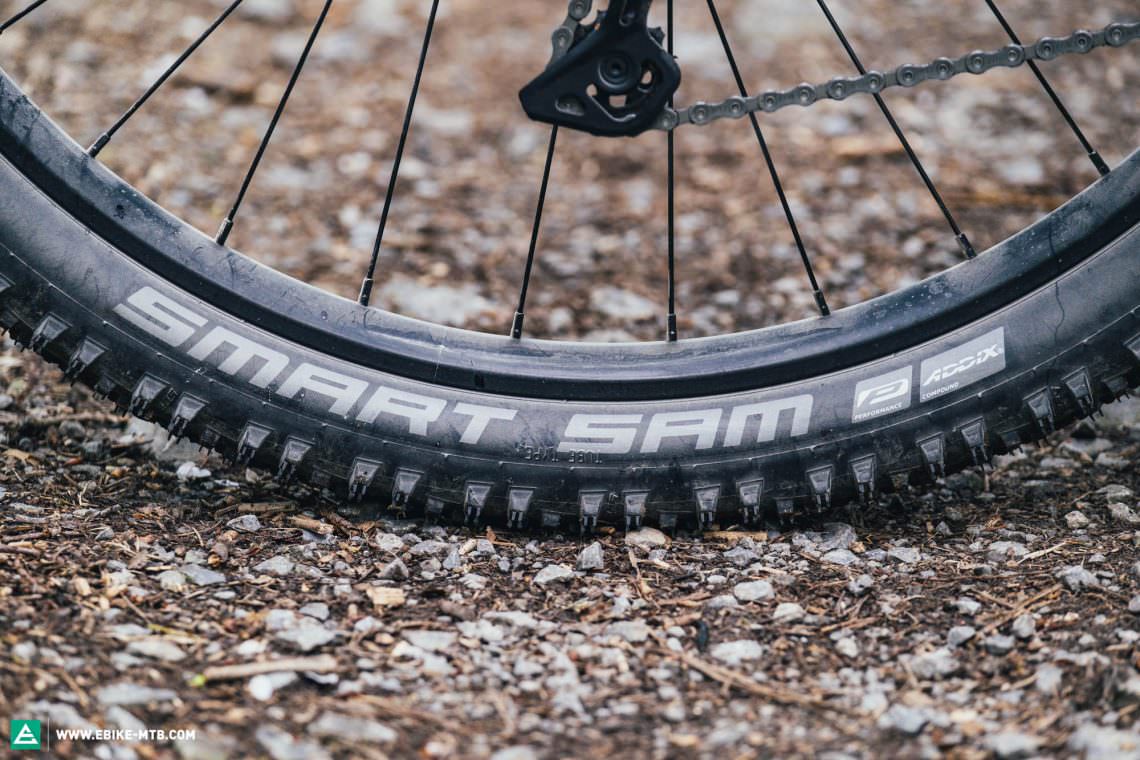
The geometry of the Decathlon Stilus
| Size | M | L | XL |
|---|---|---|---|
| Seat tube | 420 mm | 460 mm | 500 mm |
| Top tube | 583.6 mm | 603.6 mm | 623.6 mm |
| Head angle | 66° | 66° | 66° |
| Seat angle | 74° | 74° | 74° |
| Chainstays | 515 mm | 515 mm | 515 mm |
| Wheelbase | 1249.4 mm | 1269.4 mm | 1289.4 mm |
Taking the Decathlon Stilus 29″ off-road
When meandering along dirt roads aboard the Decathlon Stilus 29″, the riding position is comfortably upright and compact. Due to the relatively steep head angle, the Stilus’ handling is very direct. Beginners who steer their eMTB by turning the handlebar rather than leaning the bike over will immediately feel comfortable with this, but only on gravel roads. In terms of damping, the harsh suspension and skinny tires don’t fare well. Due to the lack of rebound adjustment on the shock, the rear suspension also bobs heavily and bounces you out of the saddle when rolling over roots. The tires offer sufficient traction as long as it’s dry and you’re riding on asphalt or gravel at a slow pace. However, they’ll quickly reach their limit when things get wet and the terrain changes from compact to loose. We recommend upgrading to more aggressive 2.6″ Schwalbe Magic Mary or MAXXIS DISSECTOR EXO tires at the very least. There’s more than enough tire clearance for that!
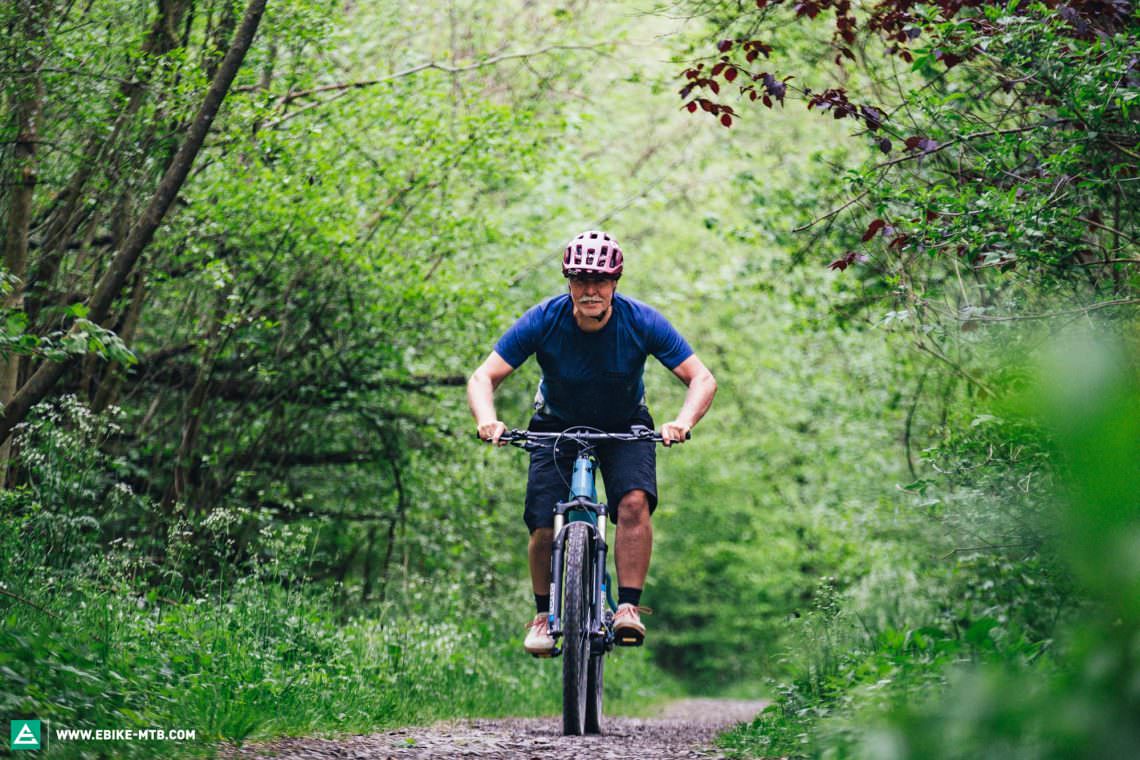
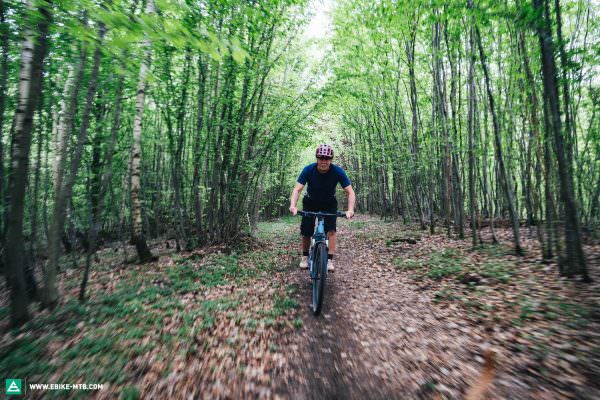
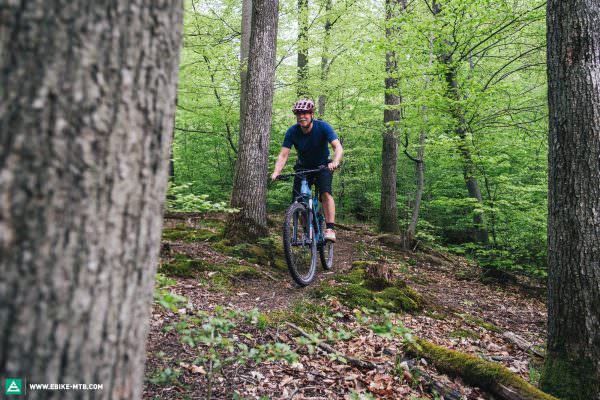
When venturing into steeper terrain, the Stilus 29″ lacks the convenience of a dropper post, though that’s to be expected at this price point. However, the rigid aluminium seat post restricts your freedom of movement unnecessarily, as it cannot be fully inserted into the long seat tube. You might want to reach for a saw and shorten the seat post slightly. If you’re looking for a sporty bike in a similar price range to ride on singletrack, your money will be better invested in a high-performance analogue trail bike or a used full-suspension eMTB. That said, the Decathlon offers a good overall package for leisurely tourers on a strictly limited budget.

Our conclusion on the Decathlon Stilus 29″
At € 2,800, the Decathlon Stilus 29″ is almost half the price of the bikes in our budget group test, offering an affordable alternative for leisurely touring riders on a tight budget. The spec consists of entry-level components from proven brands. However, the underpowered brakes, the skinny tires and the undamped shock are a big drawback. We would love to see more such affordably priced eMTBs to make the greatest sport in the world even more accessible!
Tops
- responsive handling
- fair price
- good workmanship
Flops
- underpowered brakes
- tires don’t do the bike justice
- shock has no rebound adjustment
Tuning-Tipp: bigger brake rotors | 2.6″ Schwalbe Magic Mary Super Trail or MAXXIS DISSECTOR EXO tires | riders with short legs should shorten the seat post so they can insert it further into the seat tube for downhills
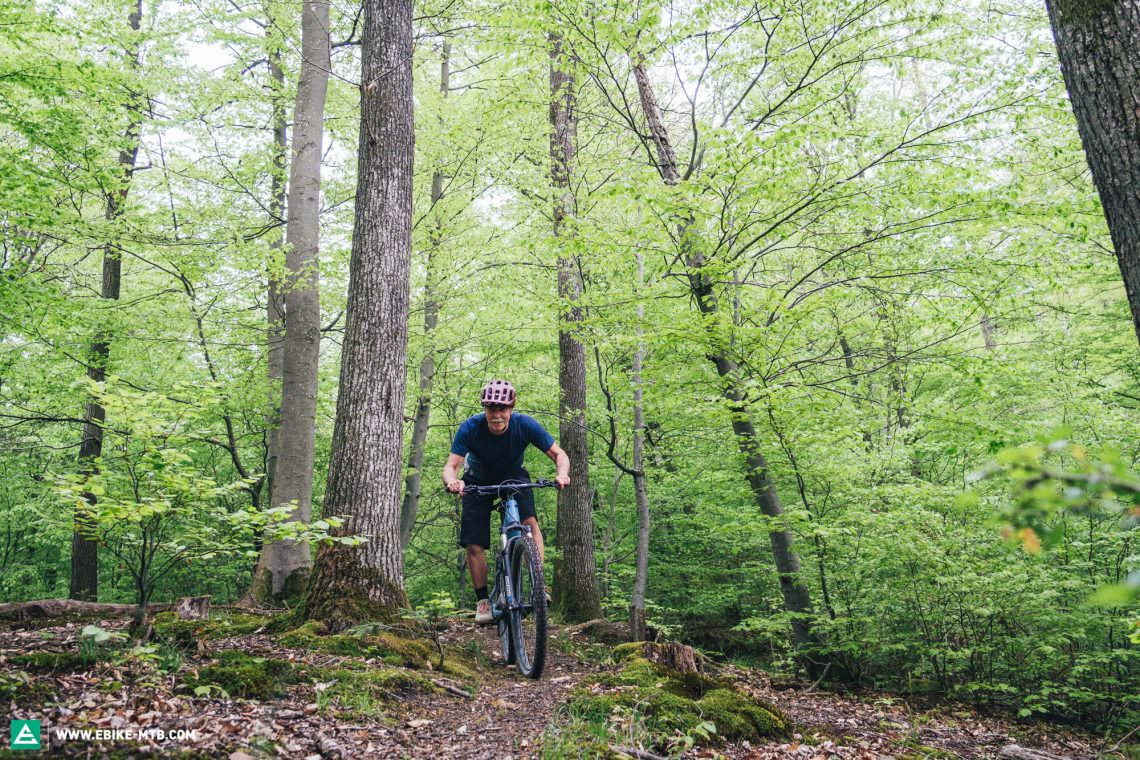
For more information, please visit decathlon.de
Did you enjoy this article? If so, we would be stoked if you decide to support us with a monthly contribution. By becoming a supporter of E-MOUNTAINBIKE, you will help secure a sustainable future for high-quality cycling journalism. Click here to learn more.
Words: Mike Hunger Photos: Robin Schmitt




